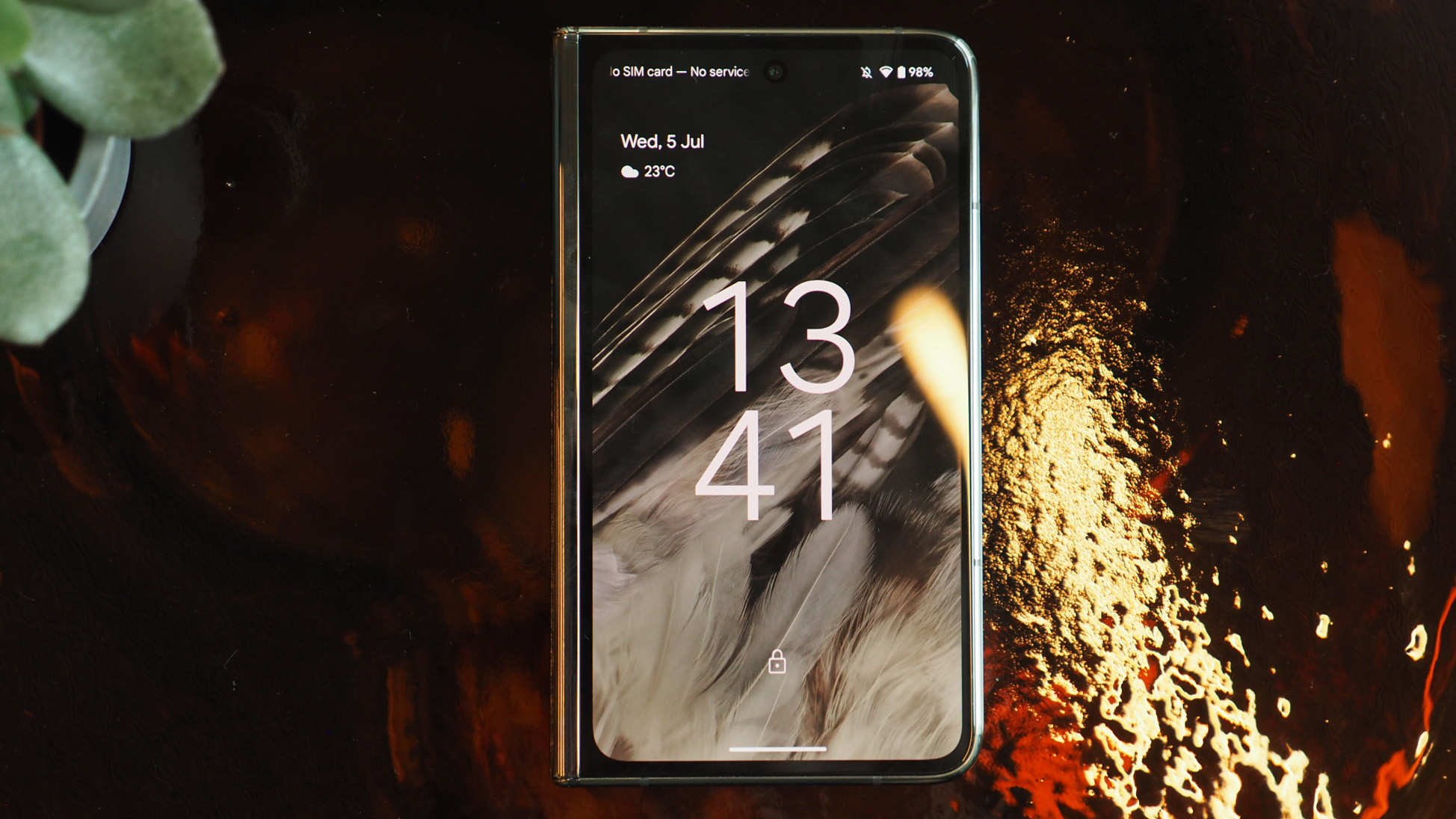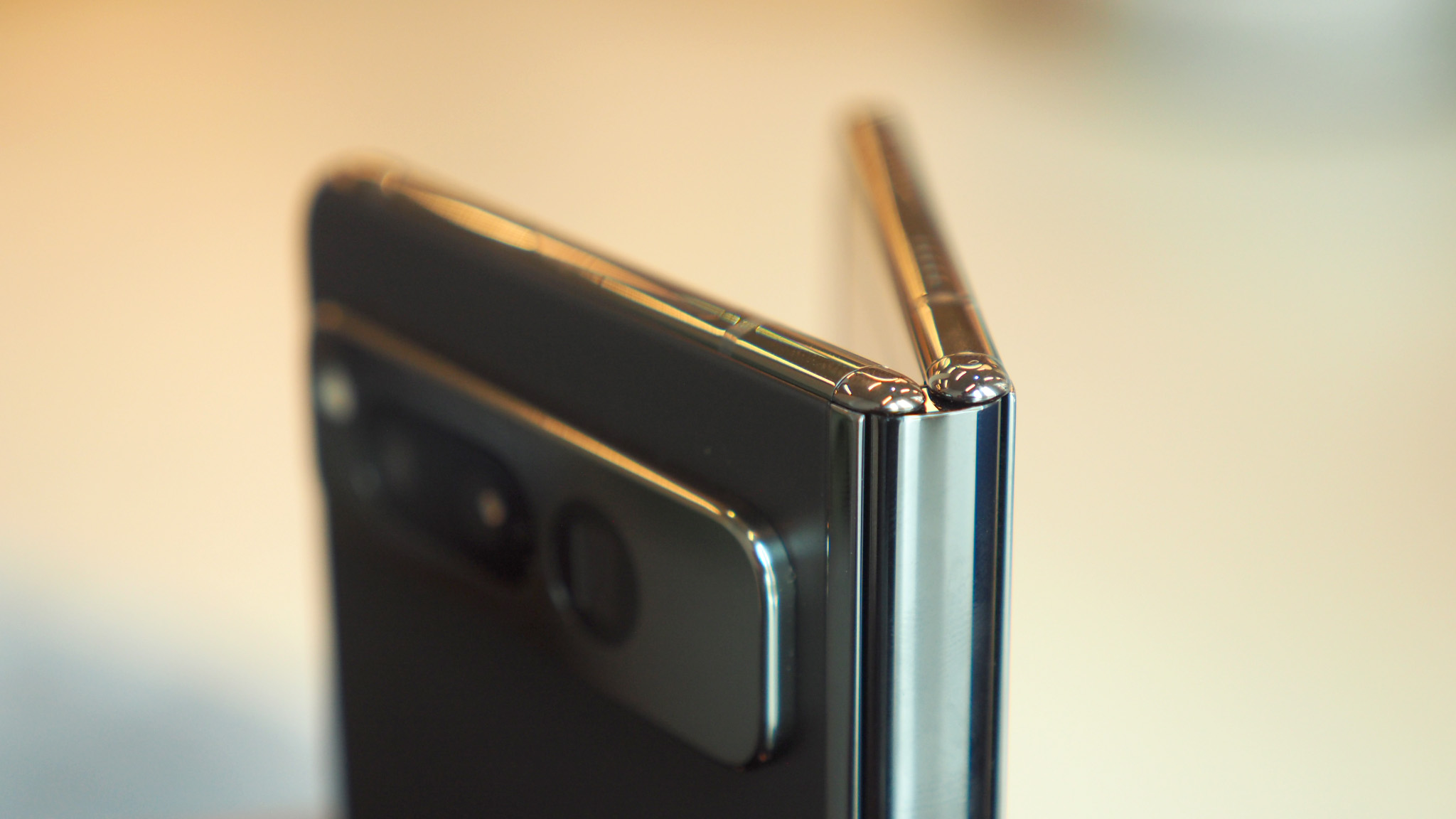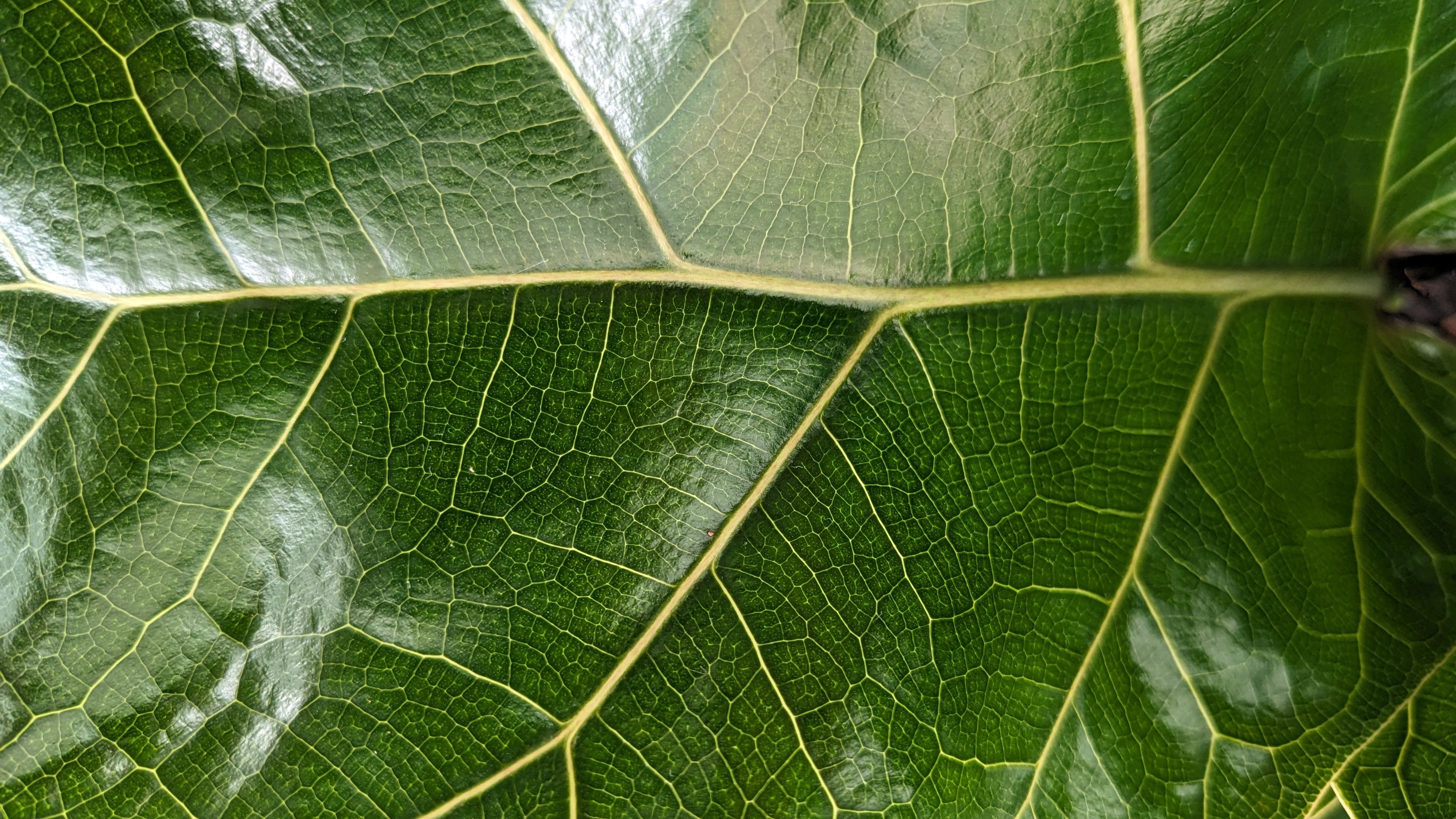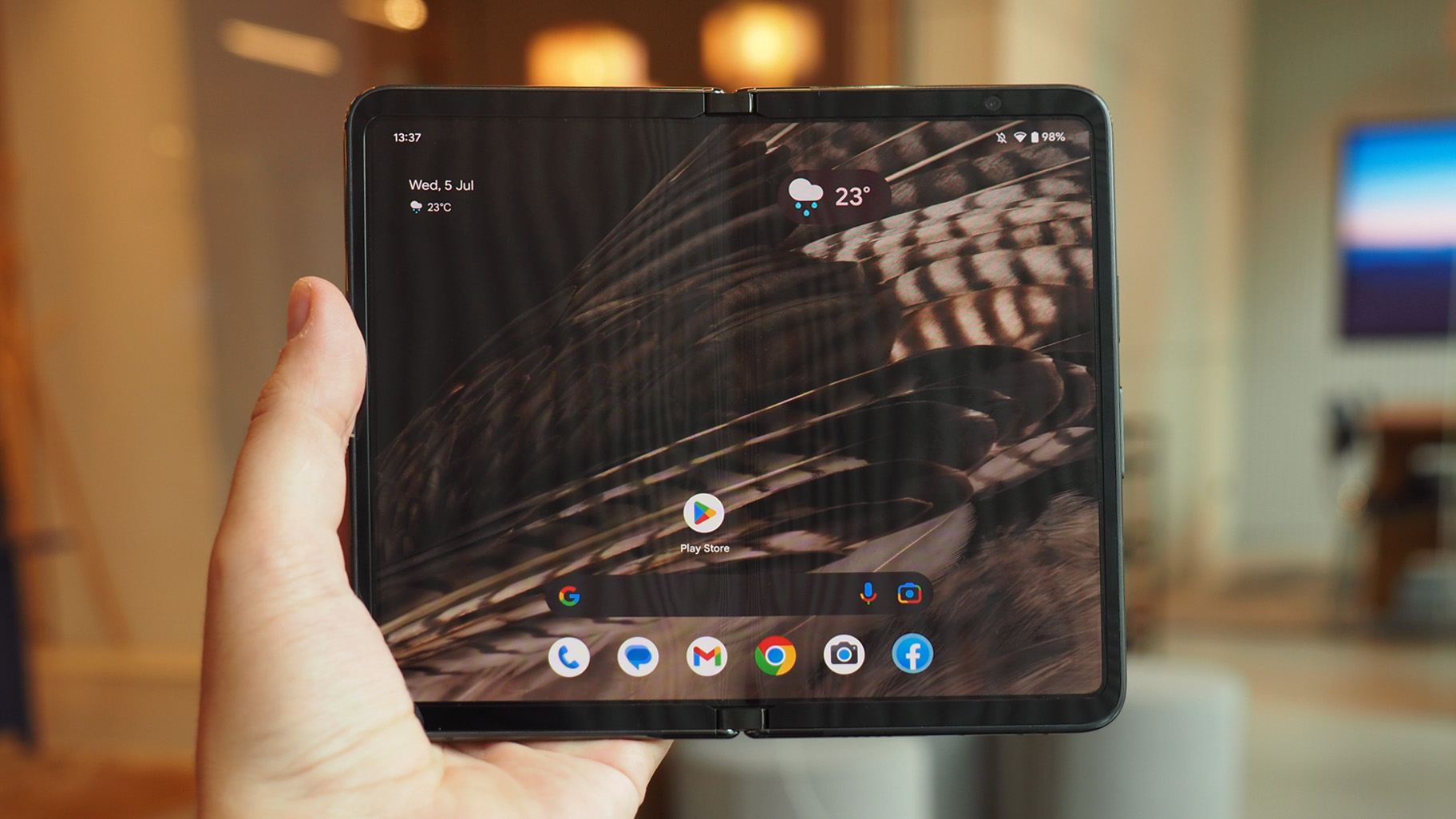Google Pixel Fold review: the start of something great
Google's first foldable phone, the Pixel Fold, has great promise on paper – but does it deliver in the real world?

The Google Pixel Fold's larger-scale front display will appeal to many folding phone fans, as it sets it apart from its Samsung Galaxy Z Fold 5 competition. However, with software that fails to maximise these two large displays, large screen bezels, performance that runs too hot too often, it feels like a first-generation device that serve to pave the way for Google's future foldable success.
-
+
When apps utilise the 7.6in display properly it's glorious
-
+
Much larger front display than Samsung Galaxy Z Fold
-
+
Decent cameras for a foldable phone
-
-
Insufficient use of screen sizes, buggy software
-
-
Big and heavy device with sizeable screen bezel
-
-
Runs hot, battery drains fairly fast
-
-
Considerable price tag
Why you can trust T3
Let me commence this review by saying that the Google Pixel 7 Pro was my favourite Android phone of the last 12 months (it even won a 2023 T3 Award to that effect). So when Google announced it was to release a folding phone and then detailed it at Google I/O 2023, naturally my heart skipped a beat. Could this be it? Could the Google Pixel Fold be the best folding phone on the planet?
Alas, no. Sure, the Google Pixel Fold is the start of something great, as in terms of specifications it ticks a lot of boxes when it comes to big-screen real-estate, cameras with computational photography advantages, and naturally being first in line for Google's Android software and security updates. Those are the kinds of ticks that get my heart rate up – in a good way!
With so much seemingly done right, why have the Google Pixel Fold and I simply flatlined – especially when so many critics have awarded it gleaming reviews? Well, full disclosure: this is the second review device I've received, after the first one's internal screen ceased to function (not as a result of negligence or damage). That was certainly the first hiccup in my expectations of a premium device such as this.
But beyond that I just get the unshakable feeling that the Google Pixel Fold is too first-gen: there's its big price, its big bezels, its software not taking advantage of those big screens to the fullest, and the big bother that is the Samsung Galaxy Z Fold 5 and its clear-to-see longer-established position in the foldables market. But there are a lot of positives to glean from the first foldable Pixel, which serve well to pave the way for its future, as I'll get to in this review...
Google Pixel Fold: Price & Availability

When Google announced the Pixel Fold's price back in May 2023, a lot of people gasped: the £1,749/$1,799 tag seemed really high for the entry-level 256GB storage model (the 512GB model is more still, but both options feature 12GB RAM).
Realistically, however, it's not out of whack with the rest of the market: the Pixel Fold is the same price as the Samsung Galaxy Z Fold 5, for example, and it's actually far cheaper than the hyper-niche Huawei Mate X3. So, yes, it's a lot of cash for anyone to spend, but it's reflective of its main competition.
Google Pixel Fold: What's new?

The Pixel Fold is Google's first foldable so, unsurprisingly, a whole lot is new. This isn't just a Pixel 7 Pro doubled up – the size differences are enough to tell you that, as the Fold's external screen is a 5.8-inch panel with a closer conventional aspect ratio (17.4:9) than any of the even skinnier foldable options out there, such as the Samsung Galaxy Z Fold series.
Get all the latest news, reviews, deals and buying guides on gorgeous tech, home and active products from the T3 experts
Right off the bat that makes the Pixel Fold a totally different proposition: I've found that using it folded, 'normal phone' style, is much like using an ultra-chunky version of the best Android phones of today. But that's often to adverse effect, as I've not all too often seen the need to open the Fold for its large, internal 7.6-inch display. With the Samsung, on the other hand, the front screen is so skinny that I've often wanted to open it out to maximise the screen.
Despite being a wholly different design prospect, many of the Pixel Fold's features will be familiar: the Google Tensor G2 chipset, for example, is what you'll find in the full 2023 Google Pixel range, from Pixel 7a, to Pixel 7 and Pro. And the cameras are a variety-pick of other Pixel phones too: a 48-megapixel main, paired with twin 10.8MP snappers to handle the optical zoom (5x) and ultra-wide side of things.
Google Pixel Fold review: Design & Displays

Not only has the Fold got that Google hardware DNA under the hood, visually speaking it looks somewhat like a foldable Pixel 7 Pro too. The camera 'bar' to the rear, for example, while it's not edge-to-edge across the full width of the design, protrudes outwards on both devices. Other than Huawei's offering, you won't find as much camera emphasis in other foldable phones right now.
And I think it looks pretty smart, by and large. But it's with the details that the Pixel Fold's shortcomings begin to expose themselves: that front display, for example, has unusually prominent bezels for a flagship phone in 2023. It even features curved bezel edges towards the hinge side of the display, which limits the amount of actual screen you get to see.
It's only the bezel that really lets this display down, however, as it's a 120Hz refresh rate OLED panel, capable of high dynamic range (HDR), and with ample 1080 x 2092 pixels for its resolution. A peak brightness of 1200 nits is strong, but it pales compared to the Galaxy Z Fold 5's 1750 nits – making that one the better choice for outside use.

But one of the biggest issues I have with the Pixel Fold's hardware is the internal screen. Not the overall spec of it by any means – it's a 7.6-inch 120Hz OLED panel with HDR10+ and 1450 nits peak brightness – but just in the implementation of it. It doesn't open flat. Every time I park the opened Pixel Fold on a desk, it rocks around like a little rocking horse. This surely has 'danger' implications for those too fiercely unfolding it too? The Galaxy Z Fold 5 does open flat and kind-of 'snaps' into place – again making it the preferable one for me (it's brighter, too, at 1750 nits peak).
As the Pixel Fold's main panel is never quite flat, it also emphasises another of those unfortunate implications of owning a folding phone: the 'crease' in the display is more prominent than you'll see on most of the competition, and when it catches light its reflection-prone display's coating takes away some of the magic of a big folding display such as this. It's not alone in this issue, of course, as the Honor Magic Vs suffers much the same, but if I'm spending £1,750/$1,799 on a phone it's not exactly ideal.
Google Pixel Fold review: Performance & Battery

In terms of performance I'd initially assumed that the Pixel Fold would be an absolute powerhouse capable of handling anything – and doing so with the reserve of Google's best software to back it up. Here's why assumption is the root of many evils, as I've found the Pixel Fold's performance to be... well, not very 'Google', really.
This is two-fold (pun intended): there's the core performance aspects, which I've seen some occasional blips in frame-rates and stutters in apps (something I assumed was of the past for such high-end devices); and the software-related hiccups, which for me have manifested aplenty – from crashing WhatsApp and Slack on repeat – to the overall fact that, somehow, Google hasn't managed to make the most of both these displays most of the time. The interfacing between apps on the front display then opening larger into the internal display isn't seamless either.

Open the Pixel Fold up and there are some great implementations in certain apps that maximise the potential of the internal display. Gmail and Outlook, for example, have a left/right divide of inbox and open mail; Ring doorbell uses the full screen to give a much larger and more resolute visual of live view; South Park: Phone Destroyer is like playing on a tablet and I freakin' love it; you can split screen and run two apps left/right (to any logical proportion of it, by dragging the dividing line) for greater multi-tasking.
All that is great. But I just don't think it's enough. It feels too first-generation to me. The Samsung Galaxy Z Fold 5 permits more than just two apps running in split screen portions; you can even have 'holding cards' waiting to be activated, meaning up to eight apps can be in play right in front of you at once. For me, Google just hasn't maximised Android (it's version 13 with the July security update here) to really and truly make the most of what the Pixel Fold could and should offer. Heck, even the front display has to be mirrored on the internal display, which I just totally don't understand – please, Google, make them individually adjustable.

As per my title of this review, however, I can foresee this being the start of something great, so it's not all doom and gloom. The Pixel Fold has so much potential that when Android 14 and beyond come into play I'm sure it'll benefit from more advances in its software that not only stabilise things, but also grow the overall experience and practicalities. Because, right now, Samsung with its One UI over Android 13 is the more established and better foldable proposition in the Z Fold 5 – you can even use an S Pen stylus with that device, further diversifying its appeal.
When it comes to battery life, I've found the Pixel Fold to be below par in this regard too. It can idle along perfectly fine and last for decent innings on its 4820mAh battery – but that's rarely the way you'll be using this device. The problem I've most encountered is that the Tensor G2 chipset in this design runs too hot, so you'll often have an extra warm Fold in hand, resulting in diminished battery life. I've often been reaching for a charger before the day is out, which isn't what I'd hoped for – but perhaps isn't a huge surprise given the two large displays that make up this device. Charging isn't especially fast, either, with a 21W wired and 7.5W wireless offering.
Google Pixel Fold review: Cameras

- Main camera: 48-megapixel, f/1.7 aperture, dual pixel phase-detection autofocus (PDAF), optical image stabilisation (OIS)
- 5x optical zoom: 10.8MP, f/3.1, PDAF, OIS
- Wide-angle: 10.8MP, f/2.2
One of the Google Pixel Fold's big benefits is that it wipes the floor against the foldable competition when it comes to cameras. It's not quite as good as the Pixel 7 Pro for a number of reasons, but it's knocking on the door of that kind of level – much of which can be attributed to Google's brilliant computational photography and processing methods.
The main camera is the star of the show, not least because it's the most resolute, but because I find the colour of images to be more realistic than from the zoom lens – where greens can look a little 'washed out', for example – and everything is delivered nice and sharp. Pair this with Portrait mode or Google's great Night Sight low-light shooting mode and the results are very pleasing indeed.








The presence of a zoom lens is also greatly appreciated, although I personally think that Google should have gone with a 3x optical zoom rather than the 5x found here. There have been studies that few users opt for such long focal lengths and that actually a mid-way offering would be preferable. I certainly think so, especially as the 5x zoom here is only a 10.8MP sensor and, despite optical stabilisation – which you can really feel in use counteracting hand movements – it's much harder to get sharp, well-framed shots from this lens (check out my Lego Sonic the Hedgehog in the above gallery as one example).
But at least the Pixel Fold has such a lens, as that's the major feature missing from, say, the Samsung Galaxy Z Flip 5 clamshell, which I recently reviewed. In that device – and we really think Google should make such a flip-phone too – I would have appreciated any kind of optical zoom. However, periscope optical zoom lenses aren't cheap and so this is part of the reason the Pixel Fold has a top-end asking price.
The key difference with the Google Pixel Fold's results compared to the Samsung Galaxy Z Fold 5's is in the detail. Zoom in close and the Pixel just has more refined, smoother results, not the more saturated and over-sharp results of the Samsung. It's partially a case of personal preference, as ever, but in the world of foldables Google definitely has the upper hand when it comes to camera variety – and that can only be a good thing.
Google Pixel Fold review: Verdict

It's taken me a long time to review the Google Pixel Fold. Two devices, umpteen weeks of on-and-off use – largely down to many other of 2023's best phones coming in for review, from the Nothing Phone (2) to Samsung Galaxy Z Flip 5 – and lots of time trying to convince myself that it'd eventually click and that I'd just 'get it'. Surely as a Pixel 7 Pro lover, the Pixel Fold was destined to be my favourite new device. Surely?
That's not become the case, though, as I find the Pixel Fold feels far too much like a first-generation device loaded with potential rather than the pitch-perfect final package. I find the large display cannibalises much of the need for the internal display, that the screen bezels are too significant, that the software – aside from the various app crashes and stutters I've experienced – fails to maximise on Google's own Android software to make the most of these displays, and that Tensor G2 in this design guise runs too hot and dents the battery life as a result.
Yes, the Pixel Fold has cameras to make other folding phones cry. Yes, many will prefer the proposition of a larger-scale front screen proposition compared to the Samsung Galaxy Z Fold 5. And, yes, many critics do already love and rave about this device. Unexpectedly, however, I'm not among them. For me the Google Pixel Fold is a folding phone with too many shortcomings to justify its asking price and – as someone who's used (or at least handled) all of its main competition, from Samsung to Honor to Oppo to Huawei – it's more a representation of the work to come when, no doubt, Google will absolutely nail a future foldable proposition.
Also consider
The Pixel Fold's main competitor is the Samsung Galaxy Z Fold series, so long as you can cope with the skinnier front display, which is quite a different proposition. The Z Fold 5, which is like-for-like priced against the Google foldable, does have brighter screens, better software, but worse cameras.
Want to save a bunch of cash? The older Z Fold 4 has screen brightness on par with the Pixel, and again better software – but worse cameras. It's available for under the four-figure mark at the time of writing, though, which makes it almost half the price of either the above-mentioned models. If you're curious about a book-style foldable, that's the one to try out first.

Mike is T3's Tech Editor. He's been writing about consumer technology for 15 years and his beat covers phones – of which he's seen hundreds of handsets over the years – laptops, gaming, TV & audio, and more. There's little consumer tech he's not had a hand at trying, and with extensive commissioning and editing experience, he knows the industry inside out. As the former Reviews Editor at Pocket-lint for 10 years where he furthered his knowledge and expertise, whilst writing about literally thousands of products, he's also provided work for publications such as Wired, The Guardian, Metro, and more.
